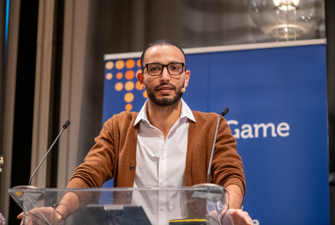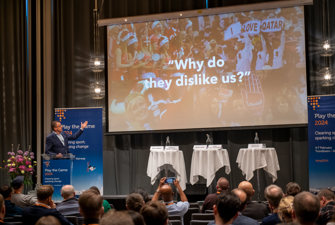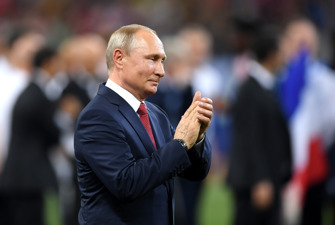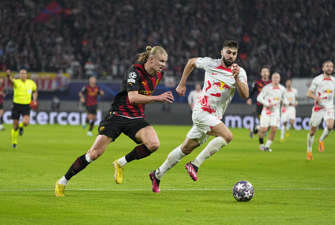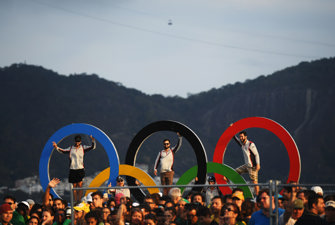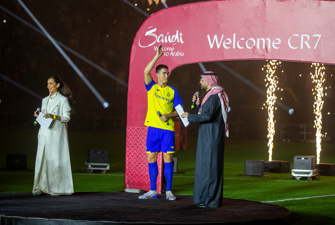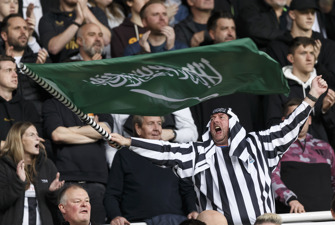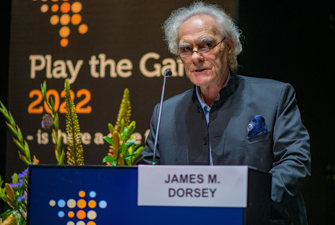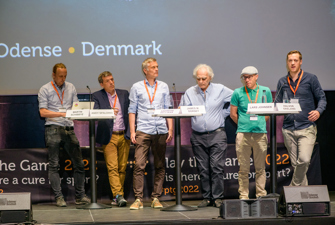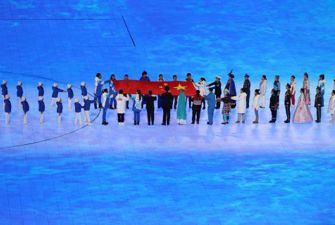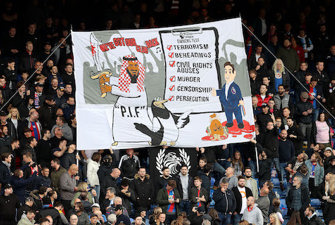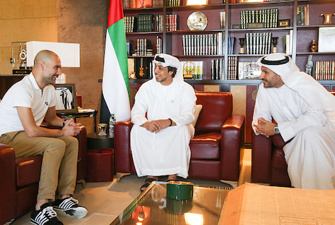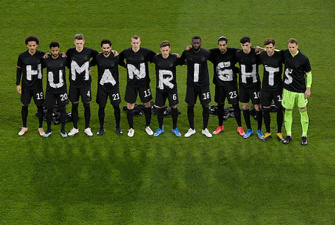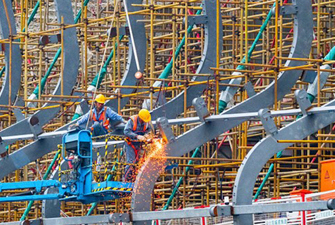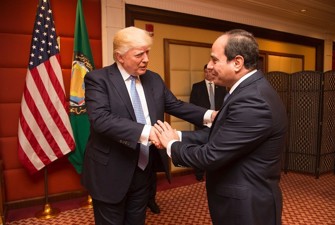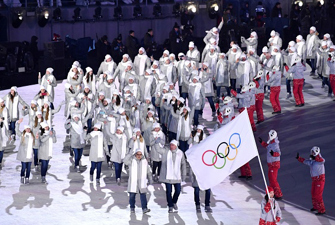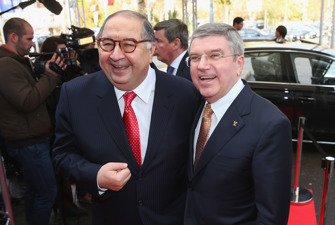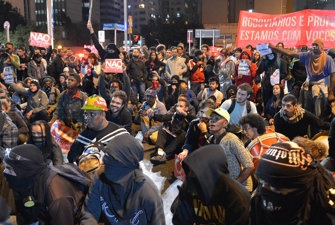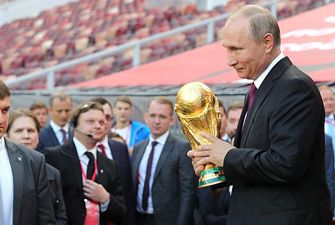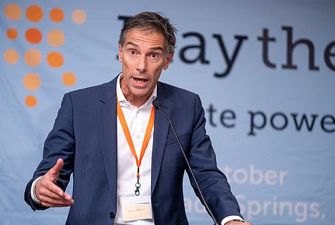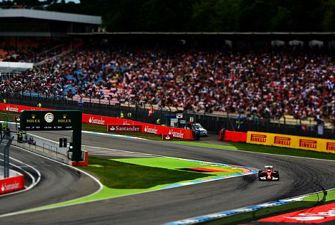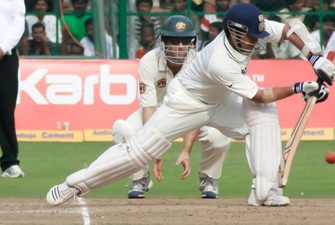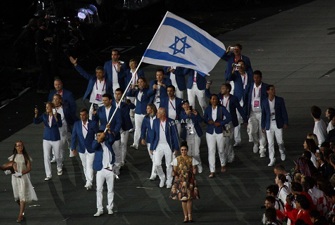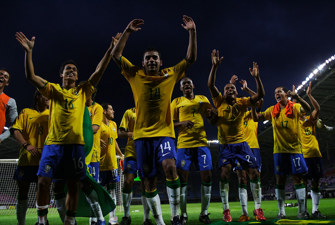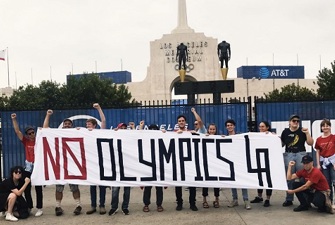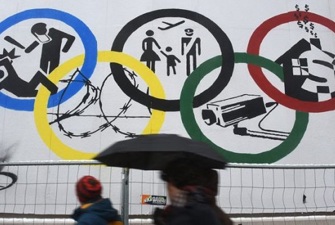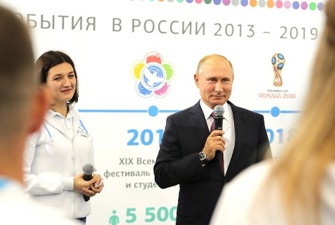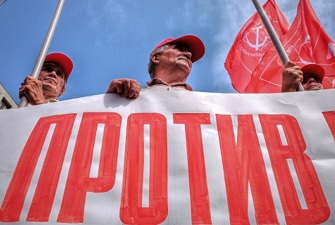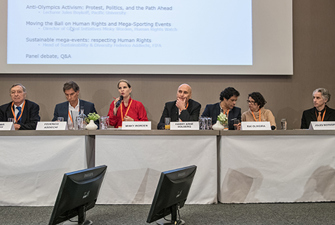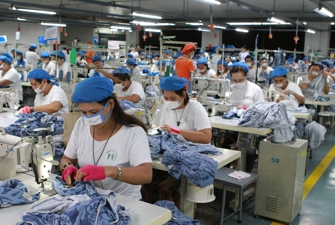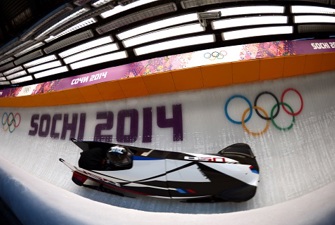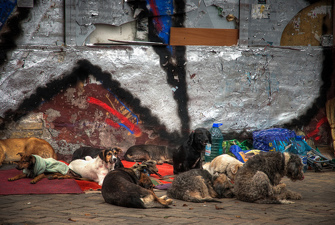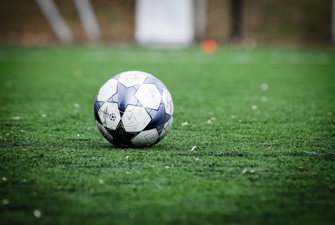Sport and Economic Development
Sport events and sport shows cannot make people of the Third World forget underdevelopment, poverty and hunger.
"No queremos goles, queremos frijoles"
The sentence in Spanish means "we do not want goals, we want beans", and it has been painted on a Mexico stadium during the football Mundial in 1986. In some way, it is the most concise statement of the dilemma that sport has to cope with in the developing world. Sport events and sport shows cannot make people forget underdevelopment, poverty and hunger. Should the governments in the Third World provide the population with sport events or with grass root sport practice? Should they attract more (usually foreign) money to organise big sport events or should they allocate a greater share of state and municipality budgets to the development of a "sport for all" or a school sport practice?
Any economic analysis of the relationships between sport and economic development can hardly avoid to start with a very sad look at the empirical evidence which shows that the least a country is economically developed, the least sport practice, sport performance, sport facilities, and sport finance are developed. Although data are missing to calculate an exact correlation between economic underdevelopment and sporting underdevelopment - this lack of available data in itself exhibits a low level of both economic and sporting development -, a number of real facts converge towards a strong relationship between the level of economic and sporting development. In such a context, the great bulk of Third World countries are somewhat dependent for their sporting activities on foreign aid, money flowing from abroad, import of sporting goods and equipments, multinational sponsors, and sometimes the relocation of industrial production by multinational corporations (Andreff 1988), while they cannot hedge against a dramatic "muscle drain" of their most talented athletes abroad (in the same sense as we usually speak of a brain drain of the elites from the educative and research system of these countries).
Then, the long lasting question to be addressed is: what is to be done for improving sporting development in Third World countries? The problem is that economic development itself is a good part of the recipe after the last forty years which can be coined the "decades of economic development failure", except in a handful of South-Asian and Latin American newly industrialized and emerging market economies. So, we will confine to discussing only a few suggestions, in the second part of the paper, well aware that they do not fit to solve but simply to alleviate some causes of the joint economic and sporting underdevelopment in most developing countries.
1. Low-level economic development triggers low-level sporting development
"The gap between developed and underdeveloped countries has become so wide that the latter have lost any hope to close it as regards either sport performance or the organisation of big sport events" (Ezziani, Kaach 1984). Such a statement remains basically true in the nineties, up to 2000, but it must be differentiated according to the level of economic development in various Third World countries. It is quite usual to distinguish, among developing countries, the least developed countries (LDCs) with a GNP per capita lower than $ 600 per year, the middle-income developing countries (MICs) with a GNP per capita between $600 and $ 2,000, and the newly industrialised or emerging market countries (EMCs) with a GNP per capita between $ 2,000 and $ 9,000 - even though some of them are not yet market economies (Cuba, Belarus). The distinction relies on some other economic variables that we would not comment on here. Applying the previous criteria, we have selected 48 LDCs, 53 MICs and 41 EMCs (See Tables 1a, 1b and 1c in Annex). The issue of sporting underdevelopment is of course the most serious in LDCs and more serious in MICs than in EMCs, and we discuss it much more here in reference to the two first groups of countries.
1.1. No available statistical data
Even from Tables 1a, 1b and 1c, we can yet see that statistical data availability is lower for economic and education figures, the lower the level of economic development. The same evidence pertains to sporting development data. "Precise data about money spent on sports and games in India is not available" (Bhatty 1989). It is just not possible to draw a statistical profile of the people who are participating in various sports and games in today India, for example. It is quite impossible to collect economic data related to sporting activities in LDCs and MICs and still quite difficult to get it in EMCs. One of the rare data source we can rely on is the result of a questionnaire sent by UNESCO to 32 African LDCs: the response rate has been 50% (Souchaud 1995a).
1.2. Not enough physical education andsport for all practice
A) Physical education: school enrolment and exposure
Children and teenagers first must attend school programmes in order to benefit from physical education at school. Let us define the net enrolment ratio in the primary school as the ratio between the number of children enrolled and the whole relevant age group. Whereas this net enrolment ratio is in the range of 95%-100% in all developed countries, it is simply not exactly known in many developing countries in 1998 (Tables 1a and 1b).
Among the EMCs for which information is available, the ratio varies from 76% in Lebanon and 81% in Botswana to 100% in Mexico. In the MICs, the interval of variation is slightly wider, from 74% in Morocco and 78% in Nicaragua to 100% in Philippines and China. The worst situation is observed in the LDCs among which the enrolment ratio falls down to 30% in Eritrea, 28% in Ethiopia and Mali, and 25% in Niger. In other words, a child in Niger has an ex ante probability to be exposed to physical education in the primary school which is only a quarter of the probability for a child in Mexico, Philippines and China (or France).
Now, once exposed to physical education, the duration of exposure has a deep influence on developing sport practice among children and teenagers. In the 16 LDCs surveyed by UNESCO (Souchaud 1995a), one country had no physical education scheduled in the primary school in 1995, three countries had scheduled one hour per week and the other countries between two and three hours per week (Table 2); in the secondary school, physical education was scheduled two to four hours per week in all countries.
The problem is that the hours supposedly devoted to physical education are practically never fulfilled, at least at 80% of the time schedule, and in several countries the sport time schedule is simply not accomplished at all (response: no, in table 2). This is mainly due to a shortage of sport teachers, to the number of pupils (40 to 100 per one sport teacher) in the primary school, and, in addition in the secondary school, to a lack of sport facilities and equipements, a shortage of qualified teachers and no vocational training to improve their qualification.
Most sport teachers qualify abroad in bilateral co-operation programmes with European countries, after having got a grant. International cooperation is badly needed for the training of sport teachers from developing countries. Nevertheless, we observe a contrasted capacity to train sport teachers between EMCs and MICs like Argentina, Cuba, Egypt, Syria or Thailand (Table 3) on the one hand, and LDCs such as Benin, Niger, Guinea or Mozambique on the other hand.
The number of sport teachers in Tunisia has increased from 3,606 in 1990 to 4,419 in 1994; but the population in school age is roughly 2.5 million people, so that the ratio is still one teacher for roughly 565 sport pupils on average (Khiari 1999). The number of newly hired sport teachers has fallen from 268 in 1991 to 190 in 1994. Tunisia is quite representative of the school sport situation in the MICs and lower income EMCs, although it is far better in several top EMCs.
B) Sport for all: does it mean anything in developing countries?
When we want to see which part of the population in a country has a sport practice, we have to define a participation ratio. Such a definition is not unique. The simplest definition is to compare the number of affiliated members to sports federations with the number of inhabitants. Although it is not a satisfying definition, we can stick to it in developing countries where accurate data is so rare.
In developed countries, we can use a frequency (once a week) or a duration (one hour per week) criterion to define more exactly how many are the sport participants, but a data collection process by a national institute for statistics is then required. A broader definition is to leave the participants self-define and quantify their sporting practice in their response to an ad hoc inquiry or questionnaire.
In most European countries (Andreff et al. 1994), the affiliation to sports federations is in the range of 20-25% of the overall population, the participation ratio is between 21% and 48% with a strict frequency definition of sporting practice in 1990, and between 54% and 82% with a broad definition of sport participation (Table 4).
Whatever its measurement, the participation ratio is lower in developing countries. In 1983, there was one affiliated member to sports federations per 739 inhabitants in Africa, one per 707 inhabitants in Asia and one per 100 inhabitants in Latin America (Bourg 1993). In Morocco, in 1993, there were four sport participants affiliated to sports federations per one thousand of inhabitants. In Tunisia, in 1994, the number of sport participants - defined as sports federations' affiliates - was 125,104 in a population of 8,500,000 inhabitants. The participation ratio was thus roughly 0.015%, i.e. much lower than in any European country in 1990. Moreover, the number of participants has decreased by 11% from 1987 to 1994 (Khiari 1999).
The great bulk of participants is concentrated on a few sporting practices, determined by available sport facilities; in Tunisia, in 1994, there were over 2,000 participants in only seven sports: football, handball, basketball, track and field athletics, karate, tennis and volleyball. Even though less precise information is available, the main reasons for the low level of participation to sports in India are assessed to be: inadequate sport facilities, too little attention paid and too little money allocated to sports and the development of physical culture, the general absence of positive attitudes towards sport, society and the fact that parents rarely encourage young people to take physical exercise (Bhatty 1989).
In African LDCs, sport participants were even fewer in 1995 with, on average, one affiliated member to sports federations per 800 inhabitants (participation ratio: 0.0013%) in the 9 LDCs surveyed by UNESCO (Table 5). The participation ratio is between 1.4% (1/71) in Cap Verde and 0.0007% (1/1500) in Gambia, compared with a participation ratio in the range of 20-25% (1/5 to 1/4) of the population in European countries in 1990.
In Table 5, we see that football provides 54% of all the affiliated members to sports federations in the 9 LDCs, volleyball for 15%, basketball for 14%, athletics for 10%, and judo and wrestling for 8%. Only in football, all the national federations are capable to organize a regular championship which qualifies the winning team for All-African competitions (African Cup). In other sports, such as basketball, volleyball, athletics, a calendar is scheduled but is not regularly held, due to financial problems or non credible enrolment of some local clubs.
In the 16 LDCs observed by UNESCO (Souchaud 1995a), as far as the olympic sports are concerned, track and field athletics, football and basketball are practised in all the countries, handball in 15 countries, volleyball in 14, judo and boxing in 13, tennis in 11, cycling and table tennis in 8 of them, while baseball, weight lifting, archery and sailing are practised in only one country and lawn hockey and horse riding in only two countries. Among the non olympic sports, the practice of karate is spread in 9 countries, traditional sports in 8 countries, taekwondo in 6 countries while French boxing and darts have participants in only one country, bowling and squash in only two countries.
The UNESCO study thus reveals that the practice of olympic sports is more developed than the one of non olympic sports. It also shows that more "sophisticated" sports are not practised, namely when their practice requires advanced technologies or expensive vehicles (automobiles, motorcycles, bicycles), specific facilities (swimming pools, golf greens, harbours) or even elaborated sporting goods (hurdles, poles, sticks, hammers, javelins, etc.).
As for teachers in school sport, here again the scarcity of qualified coaches remains a problem. The cost of training them is beyond the budget constraint of developing countries - namely LDCs -, and many coaches must be trained abroad or they simply are "imported" foreign coaches. The ratio of coaches to sport participants is very low since most coaches cannot be waged under satisfactory conditions and the number of voluntary workers is not big enough to compensate for the coach shortage.
The latter sometimes affects even high level sport. High level athletes and sport participants cannot benefit from medical care to the same extent as in developed economies. In the 16 LDCs surveyed by UNESCO, 10 have an organized system of sporting medical care, but 8 have no specialized sporting doctors, and only 4 countries have both specialized doctors and medical-sporting centres.
1.3. Few domestic money in sport
The government is the main sponsor and patron of sport activity in many developing countries, namely in LDCs (Kidane 1996). It appears from the UNESCO study (Souchaud 1995a) that roughly 80% of the LDCs do subsidize sports federations, but the amount of subsidies is too low to secure sporting activities all year long, except in football. In the 1940's and the 1950's, the Ministries for Education and Health were still financing enough physical education to leave it with a good room in school programmes.
School sport competitions were sometimes national events. But with the demographic expansion and the struggle against illiteracy, the number of pupils and students has dramatically increased in developing countries and has exhausted all the budgetary capacities needed for financing sport practice at school and elsewhere. In India the government expenditure on sports was of 0.02 dollar per capita in 1985 (Bhatty 1989). In the face of a trade-off between literacy and physical education, no Ministry of Education has privileged the latter against the former.
When new Ministries for Sports have been introduced in the governments of developing countries, they have neither been ranked among top priorities nor benefited from a substantial level of subsidies. The state budget for sports in Tunisia has evolved from 26 million dinars in 1986 to roughly 62 million dinars in 1994 (about $ 40 million). In 1986, its share in the overall state budget was 1.91%, in 1994 1.53%. The finance flowing from the municipalities' budgets into sport activities has increased from 118 million dinars in 1990 to 189 million dinars in 1994, but its share in the overall municipalities' budgets has decreased from 2.46% to 2.31%.
Another example is that of Nigeria where, facing a too short budget availability for sport development, the military government launched a one naira ($ 0.25) per capita sports development appeal fund. The aim was to appeal to every capable and interested Nigerian to pay at least one naira to this find (Eziakor, Nwali 1989). This sort of call to the population is hardly successful in countries where the average income is not enough for current food. The money flowing from consumers (participants) into sport activity is practically nothing. How pay a sport shoes par when its price is over the average monthly wage in the country? How and why buy a brand-named sport shirt when it costs more than a national costume?
Finally, those national sports federations that want to be internationally recognized, first must be legally established and confirmed by the government and, then, they must pay their annual membership fee to the international federations, namely if the country intends to participate to international sport events. The problem is that, for various LDCs, $ 300 per year is rather high a fee, in particular if this amount is to be paid to a number of (at least five) international federations in order to create a national olympic committee. In 1985, the Council for African Sports was complaining that only 10 out of 50 member countries were able to pay their subscription fee, so that the CSA was running a deficit every year.
1.4. Few sport facilities and equipments
There is no comprehensive data available about sport facilities, stadia, playgrounds and games equipement in India. Even in the higher educational sector, the Indian Ministry of Human Resource Development has stated in 1986 that in most universities and colleges, games and sports have been neglected areas (Bhatty 1989). In 1980, Tunisia had only 7 sporting halls; in 1995 they were 50; the number of football lawns was 25, and 112 private sporting halls had been built from 1980 to 1995 (Khiari 1999). The state budget for building new sport facilities has grown from 3 million dinars in 1988 to 9 million dinars (roughly $ 6 million) in 1995. In most Tunisian stadiums, three-quarters of all the seats are not roofed over and one third of the attendance has no seat. In Nigeria, sport facilities are practically non existent due to a lack of finance caused by economic underdevelopment.
In the 16 LDCs covered in the UNESCO study, the number of sport facilities in 1995 is the following: 1130 football pitches (average: 71 per country), 490 volleyball pitches (31), 474 basketball pitches (30), 304 handball pitches (19), 213 athletics tracks (13), 51 swimming pools (3) and 14 gymnasiums (1). No baseball pitch, no boxing ring, no cycling track, no horse-driving area, no hockey rink, no tatami, no tennis court, no harbour for sailing are found in these countries. In those countries where sports facilities are present, they are offered to the practice of very numerous potential participants - inhabitants (Table 6): on average in the 16 LDCs, there is one athletics track per 563,000 inhabitants, one football pitch per 106,000 inhabitants, one small pitch (basketball, volleyball, handball) per 253,000 inhabitants, one swimming pool per 2,350,000 inhabitants and one gymnasium per 8,600,000 inhabitants. Since sports facilities are so rare, we could have expected a strong effort for their maintenance.
In fact, it is quite the contrary: sport facilities often are not maintained. The maintenance of sport facilities incurs financial costs, so that the authorities reduce their use to a few exceptional events which in turn diminishes the number of local sport competitions and thus the sporting activity of clubs and sports federations, and finally decreases the number of trainings and sport participants. Sport facilities being consequently very much under-utilized, their maintenance is felt neither useful nor necessary.
Among the 16 LDCs surveyed by UNESCO, one has even no stadium capable to welcome a big sporting event satisfying the international rules and norms. Usually, only the capital of the country is endowed with such facilities that are used for sport events and never for regular sport training. Most "national" (domestic) sport events are organized in the capitals of LDCs simply because, in each country, the capital is the only one city endowed with accurate and well-maintained sport facilities (Souchaud 1995a). A UNESCO suggestion (Souchaud 1996c), for developing sport for all in developing countries, in particular in small nation-states and island countries, is to favour the development of simpler sport areas (not arenas), instead of sophisticated sport facilities.
For instance, it is suggested to integrate a football pitch within an athletics track or, the other way round, to picture the track on the football pitch. Some experiences of this kind have been successfully achieved in Comoros, Madagascar and Rwanda. In the same vein, swimming pools could be fitted out into the sea, close to the sea shore at a cheap cost.
Even among MICs and EMCs, sport facilities is a source of frustration. The prestigious Maracana stadium in Rio de Janeiro initially had a welcoming capacity of 200,000 spectators, when it was brand new in the 1950's. Today, the stadium is no longer water-proof. In 1992, a wall protecting the upper gallery collapsed during the final of the national championship (Flamengo-Botafogo): four spectators died and 102 were injured.
Now, the Maracana is still waiting for an overall restoration and the access to its upper gallery is limited; so that the capacity is reduced to 120,000 spectators. All these troubles are ascribed to the Suderj, the public agency in charge of the stadium management, which is short of the necessary funds to proceed to any investment. The Suderj is looking for the privatization of Maracana through selling its assets.
1.5. Fewer world-level sport performances than in developed countries
In poor developing countries, talented sport participants to Olympics have a few chance to compete successfully with the participants from rich developed countries insofar as they cannot afford the same financial and material means for training, preparation and so on. At Sydney Olympics, Africa was represented in women basketball by Senegal and in men basketball by Angola with no hope of winning since the best African performances so far were the ones of Egypt (the 9th rank in men basketball at the 1952 Olympics) and Zare (the 12th rank in women basketball at Atlanta games, 1996).
If we take a more systematic view of sport performances obtained by developing countries in world-level competitions, again we observe that economic underdevelopment is an hindrance to world sporting performances of many countries. The overall number of countries that have participated to the Olympics increased from 144 in Los Angeles 1984 up to 159 in Seoul 1988, 169 in Barcelona 1992, 197 in Atlanta 1996, and 199 in Sydney 2000, while the number of distributed gold medals has grown from 226 in 1984 to 301 in 2000. The former increase is basically due to the growing number of developing (including the former Soviet Union) countries joining the Olympics. In 2000, among the 199 participating countries, 139 of our 142 sampled developing countries were attending Sydney Olympics, of which 47 LDCs (out of 48), 51 MICs (out of 53) and all the 41 EMCs. In other words, practically all developing countries are following Coubertin's incitement to participate even though it is at a high cost to many of them. The problem is that the "productivity" (to phrase it like Praicheux, 1992) of an investment in the participation to Olympics is not very high, on average, for most developing countries.
A detailed analysis of Los Angeles Olympics (Elmandjra 1984) had exhibited that developing countries had won 90 out of 687 medals (13%). The study by Elmandjra also demonstrates that only 21 developing countries had got at least one medal, and only 7 countries had obtained at least one of the 28 gold medals distributed to Third World countries (of which 15 for China and 6 for South Korea). The other 198 gold medals had been won in Los Angeles by 26 developed countries which had got 597 of the overall number of distributed medals. When ranked according to the number of gold medals per million of inhabitants, the first developing country in Los Angeles Olympics was South Korea (12th rank, 0.18 medal per one million inhabitants), then Morocco (19th, 0.09), Kenya (20th, 0.05), Mexico (21rst, 0.03) and China (23rd, 0.02). The average ratio is of 0.05 medals (of all kind) per million of inhabitants in developing countries while it is of 0.75 medals in the 26 developed countries (a "productivity" fifteen times higher than in the Third World).
In Seoul 1988, Third World countries had got 41 out of the 739 distributed medals (6% of the total), of which 9 for Kenya and 6 for Brazil (Fats 1994), while they were roughly 70% of the participating countries. This shows that the performance of developing countries in terms of medals has markedly decreased, compared to Los Angeles 1984. In Barcelona 1992, developing countries have improved their relative performance with 89 out of 815 medals (11%), primarily due to Cuba (31 medals), but also to Kenya (8), Turkey (6), Indonesia (5), Brazil, Morocco and Ethiopia (3 each). Nevertheless, developing countries have participated to only 18% of the finals while their athletes were providing 34% of the total number of participating athletes (Praicheux 1992). Athletics and boxing are the two sports for which the distribution of medals usually is less uneven for Third World countries, namely in Barcelona 1992. However, developing countries succeed more in sports without technical requirements, i.e. more in runs than in, say, pole vaulting. For a number of sports (horse riding, gymnastics, cano-kayak, rowing, cycling, etc.), only developed countries are involved in the Olympics competitions. The so-called "North-South" gap is nearly as much obvious for Olympics' sporting performances as it is for economic development. This evidence is again confirmed in Atlanta 1996 and Sydney 2000 (Table 7).
In Atlanta 1996, developing countries have won - once we exclude the former Comecon and Yugoslav countries from the picture - 186 out of 836 medals (roughly 22% of the total). Among these 186 medals, 45% (84) have been got by the EMCs, 73 medals (39%) have rewarded athletes from the LDCs and only 29 (16%) those from the MICs. All in all, 33 developing countries have received at least one medal as against 28 developed countries (and 18 former Soviet countries): 12 EMCs, 11 MICs and 10 LDCs. Within the LDC group, the lion's share is for China with 50 medals, right after the USA (101), Germany (65) and Russia (63). Without China, the LDCs have only won 23 medals: Kenya 8, Nigeria 6, Ethiopia 3, Burundi 1, India 1, Mongolia 1, Mozambique 1, Uganda 1 and Zambia 1.
Sydney Olympics both widen the gap between developed and developing countries, and concentrate the medals on a fewer Third World countries, primarily the EMCs. The proportion of medals rewarding Third World athletes is practically the same as in Atlanta (22% of the total) whereas the number of medals captured by developed countries has increased from 438 in Atlanta to 471 in Sydney. Among the 208 medals distributed to developing countries, 46% (95) have been won by the EMCs, 80 medals (38%) by the LDCs and 33 (16%) by the MICs. All in all, only 28 developing countries have received at least one medal as against 31 developed countries (and 20 former Soviet countries): 13 EMCs, 8 MICs and 7 LDCs. Within the LDC group, China has got 59 medals, right after the USA (97) and Russia (89).
Without China, the LDCs have only won 21 medals: Ethiopia 8, Kenya 7, Nigeria 3, India 1, Mozambique 1, and Vietnam 1. The concentration of medals on a few developing countries is of course quite lower as compared to developed countries. For Sydney Olympics, we calculate a first ratio dividing the number of medals by the number of countries having gathered them. We find:
developed countries = 15,2 medals per country; developing countries = 7,4 medals
EMCs = 7,3 medals; MICs = 4,1 medals; LDCs = 11,4 medals (without China = 3,5).
The calculation of a second ratio between the number of medals and the number of participating countries in each group gives:
developed countries = 7,85 medals per country; developing countries = 1,50 medals
EMCs = 2,32 medals; MICs = 0,65 medals; LDCs = 1,70 medals (without China = 0,45).
The last result (namely without China in the LDCs) shows that the more a participating country is developed the higher number of medals it wins; this applies to the gap between developed and developing countries as well as within developing countries. Not only "a nation cannot just suddenly become a sporting nation" (Chesnais 1996), but it will take decades for a developing country to join the group of major medal winners insofar as sporting performances seem to be correlated with the level of economic development.
Let us notice also that the medals won by Third World countries in Olympics, since 1896, are much concentrated on a few sports: 80% of the medals won by African countries are related to athletics (especially runs) and boxing. Asian countries have specialized in martial arts and boxing. Latin America would be practically non existent on the international scene without football and tennis (Bourg 1993). For obvious geographical and climatic reasons, developing countries are even less capable to win medals at Winter Olympics. They have been rewarded only 32 times (1.7% of the total) in all Winter Olympics up to Nagano 1998 (Table 8). If we except former Soviet economies, just one EMC (South Korea) has got 16 medals, one MIC (North Korea) has won 2 medals and one LDC (China) has received 14 medals over the whole history of Winter Olympics.
Looking now at the football World Cup (Mundial), the winner has always been either a developed country or one of the three following Latin American EMCs: Argentina, Brazil and Uruguay. Neither any MIC, nor any LDC. From 1930 to 1986, developing countries have accounted for 58% of the participating countries to the 13 football Mundials, for 35% of finalists and 33% of semi-finalists, though they have won in 54% of cases, due to the performances of the three above mentioned Latin-American EMCs (Andreff 1988).
Several African countries do not even participate to the World Cup, because they fear to pay a fine in case of withdrawal. They cannot afford such a payment. On the other hand, they are not sure to finance their participation up to the end, and to avoid a withdrawal. Aware of this problem, UNESCO has suggested to distribute LDCs into close geographical groups for the preliminary phasis of the World Cup (in order to minimize the transport costs of their teams), to convene this preliminary phasis in a single country for each group, and to charge the FIFA for covering accommodation, journey and travel costs of the LDC teams (Souchaud 1996b). As regards the Athletics World Championship, the number of LDCs which have participated (out of 48) is 30 in 1983, 35 in 1987, 35 in 1991, 39 in 1993 and 38 in 1995. The number of withdrawals (either men or women teams) has been: 9 in 1983, 19 in 1987, 15 in 1991, 11 in 1993 and 10 in 1995, due to financial constraints as usual (Souchaud 1995c).
In international sport competitions that require the use of sophisticated sporting goods and technical equipements, the participation of Third World competitors is not significant, even though some of them have won (think of Ayrton Senna in F 1). Only four riders from Colombia and one from Mexico were representatives of developing countries in the 1993 Tour de France (cycling), while three drivers from Brazil were involved in the 1993 F 1 world championship, and six pilots from developing countries (2 Brazilans, 2 Thas, 1 South Korean and 1 from Zare) were participating to the 1992 Paris-Dakar rallye (Bourg 1993).
1.6. Few world sport events welcomed
About thirty developed countries concentrate the organization of roughly 95% of all international and world sport events per year. The rest of the world, basically some 170 developing countries (including our 144 sampled countries), welcome no more than 5% of the big sport events. Usually, the international competitions localized in the Third World are sponsored and partly financed from abroad or, otherwise, they consist in "regional" (African, Asian, etc.) international sport events. Sometimes, the latter are postponed or cancelled due to financial constraints. The cost of organizing the Olympic Games in Seoul 1988 (roughly $ 5 billion) is bigger than the value of GNP for such countries as Kenya, Ethiopia and most LDCs.
The IVth African Games, first scheduled in Algiers in 1978, were postponed several times by lack of finance and finally were convened in Nairobi in 1987. The Afro-latino-american Games scheduled in 1973 never were convened. The XVIth Central American and Caribbean Games scheduled in 1990 were canceled when the Guatemalan state withdrew its financial support.
Moreover, several African countries are not able to participate to African Games or to the football Mundial, simply due to financial shortage, and their withdrawal threatens the course of competitions. The same countries are even less capable to finance the organization of an international sport event.
Nevertheless, we can observe a few exceptions to this general rule (Table 10), merely located in EMCs like Argentina, Brazil, Chile, Mexico, South Africa, South Korea and Tunisia. It is only in this group that we can find countries able to organize big world events such as Olympic Games or football and rugby World Cups. The LDCs (China, Congo, Ivory Coast, Kenya, Nigeria, Senegal) are confined in welcoming more \"regional\" international sport events. Table 9 confirms: the football Mundial has been organized twelve times in developed countries and six times in Latin American EMCs, though the last time has been in Mexico 1986.
Welcoming an international sport event usually is an enormous expenditure for the government of a developing country. The government of Ivory Coast has invested 200 million francs (roughly $ 40 million) in the Bouak stadium (20,000 spectators), the renovation of the Houphout-Boigny stadium and the Treichville sport complex, in order to be ready for welcoming the African Cup of Nations (football) in 1984. The government subsidy (about $ 0.8 million) and the gate, TV and sponsoring revenues ($ 1 million) have not covered the whole cost, and have left a deficit of roughly $ 0.3 million, a financial nightmare for a LDC.
Kenya has invested 700 million francs ($ 140 million) in 1987 to welcome the African Games, including $ 50 million for the building of a new stadium (60,000 spectators) in Nairobi. The Xth Mediterranean Games in Syria 1987 have reached a cost of $ 600 million of which at least $ 350 million remained on the bill of the host country. In 1989, the Argentine Tennis Association was unable to find $ 200,000 necessary to organize the Buenos Aires Open. Thailand has invested $ 60 million - two thirds of which in sport facilities, urban infrastructures and roads - for preparing the 18th South-East Asian Games in Bangkok 1995. In spite of a $ 16 million inflow of private money (sponsoring, etc.), these Games have finished in the red by roughly $ 100 million. The worldwide prestige associated to organizing a world sport event is too high a cost for many developing countries. When this cost is accepted by the government, it is usually at the expense of the whole population that will cover the deficit as taxpayer.
In spite of a FIFA mission in Morocco which concluded that, compared to 1994 and 1998, the country had achieved big improvements as regards sporting facilities and road transportation infrastructures, Morocco did not obtain the football Mundial 2006. Neither Brazil (which resigned in July 2000), nor South Africa did get it. In May 2000, Sepp Blatter said that the Mundial 2006 should be allocated to an African country, Morocco or South Africa, "if one of them were able to meet the preconditions for welcoming such an event".
Obviously, they have not met them as much as Germany. South Africa was expecting a revenue of 6.6 million rands (a bit less than $1 million) derived from tourism, building and transport expenditures, an additional inflow of foreign tourists in South Africa in 2006 (an income of 16 billion rands, close to 2% of GDP), and 130,000 temporary jobs linked to the event.
The Johannesburg Stock Exchange index has lost 1.3% the day when Germany was choosen, and the loss has reached 25% on building and tourism equities. Finally, the football Mundial has been located for the twelth time in a developed market economy: Germany. Note that no other Asian or African developing country has ever been selected.
The same story would probably occur with the allocation of the 2008 Olympics. Cuba and South Africa have applied for organizing it and have been yet turned down by the IOC in August 2000. The official argument is that these two countries are not equiped with high quality sport facilities, a modern transportation system and a high-tec telecommunication network. But we can argue the other way round: organizing Olympics in some Latin American or African countries is an opportunity to develop their sport facilities and communication infrastructures. Thus, the problem lies elesewhere: who would pay for providing these facilities? Probably Paris, Beijing, Osaka, or Toronto, but for their own sake.
1.7. "Muscle drain"
In the 16 LDCs surveyed by UNESCO, athletes and talented sportsmen and women leave the country as soon as their sport performance is high level by international standards (Souchaud 1995a). This "muscle drain" is basically disappointing for the local coaches and sport teachers. The best African basketball players are used to migrate and, sometimes, to change their citizenship. A non exhaustive list of those who have migrated to France encompasses: Abdou N'Diaye (Senegal), Mathieu Bisseni (Cameroon, then he got the Central African and then the French citizenships), Apollo Faye (Senegal, then French), Marc M'Bahia (Ivory Coast), Jean-Jacques Conceiao (Angola). In the US, some African players are NBA stars such as Hakeem Olajuwon (Niger), Manute Bol (Sudan), Dikembe Mutombo (Congo Kinshasa) and Yinka Dare (Nigeria).
In all professional sports, developing countries and former Soviet economies are utilized today as a nursery for sporting talents and a huge pool of sporting labour to draw on. In French professional football, African players have every year provided a substantial percentage of the total labour force (Table 11).
This percentage has increased from 5.5% in 1980 to 10.5% in 1990 and 18% in 1998, including a partial substitution of Sub-saharian to North African players "imported" in France. In 1998, this means that 70 out of 450 Division 1 players in France are from Africa. The wage gap between the African and the French labour market for player talents is between one to ten and one to twenty (de Brie 1996). Football players in Cameroon earn only premiums and bonuses, between $ 6,000 and $ 14,000 per year, quite over the domestic average wage, quite lower than the average income of a French player.
Latin American countries are also suffering from a "muscle drain": 54% of all the professional players in Brazilian football are not earning more than the legal minimum wage of 120 reals (roughly $ 140) per month. The 9% best payed players were earning over $ 1,400 per month in 1997. The same year, Ronaldo (Inter Milan), Denilson (Betis Sevilla), Roberto Carlos (Real Madrid) and Rivaldo (FC Barcelona) were assessed by Business Age to earn together over $ 140 million per year.
Such a revenue gap is a strong incentive for African and Latin American players to leave their home country and to look for being hired on the European market for players. From 1989 to 1997, 2,084 Brazilian football players have migrated to foreign professional clubs all around the (developed) world, in particular in Italy, Spain, Portugal, France and Japan. All these transfers have been reckoned by the Brazilian football Confederation to yield roughly $ 500 million to Brazilian clubs.
In 1997, a football players' strike bursted out because a small Argentine club (Deportivo espanol), on the verge of bankrupcy, did not release six players, and in 1998, a similar strike developed in Paraguay. Both strikes were aiming at an increased labour mobility, including towards foreign player markets.
The same tendency to drain muscles from developing countries is observed in various sports. The best Mexican and African boxers usually enter the North American and European boxing business. Khalid Mahmood, the goal keeper of the Pakistanese lawn hockey team, as soon as he reached Atlanta for the 1996 Olympics, left his team to be hired on the black market for sporting labour and finally remained in the US. Such a case is definitely not unique. Niurka Montalvo (Spain), Liliana Allen (Mexico), Angel Perez (USA), Ivan Perez (Spain) and Luis Martinez (Mexico), all of them born in Cuba, were not able to participate to Sydney Olympics because they have previously been involved in the Cuban team, before changing their citizenship, less than three years ago. Cuba has not allowed them to participate under a new flag.
The same hindrance appeared with three Moroccan runners selected in the French team for Sydney. But in many teams, a number of naturalized nationals have been allowed by their former home country to participate to the 2000 Olympics in the team of their new home country. Most of them are from developing (and post-Soviet) countries.
The muscle drain is not without its problems. First, it undermines the sporting substance of developing countries. Second, it diverts the most talented sportsmen and women, that is exactly those who have had the opportunity to benefit from the rare domestic coaches and sport facilities. Third, in some cases, it erodes the capacity of the home country to use its most talented athletes in international competitions which partly explains the poor performances of developing countries in world sport events.
For instance, football players from Africa (namely Cameroon, Nigeria, Ivory Coast) have not been released by their (European) professional clubs to accept a selection in their domestic national teams in view of playing the matches of the 22nd African Cup 2000 (177 out of the 352 registered players are playing in European clubs, namely 19 out of the 22 registered South African players).
The African Cup is nicknamed the "cattle fair" because a number of well known European clubs' managers and coaches and players' agents are attending it with the objective of recruiting new talented players. At Sydney Olympics, Cameroon, Nigeria and Morocco have had to compete without some of their star players, in spite of the article 38 of FIFA rules that is supposed to compel clubs to release their players selected in national teams.
The muscle drain turns into a brain drain, to some extent, when it affects sport coaches. All the best Tunisian football coaches have moved abroad, at least once between 1985 and 1994, namely in France, Germany, Saudi Arabia, United Arabian States, Italy, Turkey, the US, Bahrein, Oman, Kuwait, Irak and Qatar (Fats 1994).
1.8. Professional sport, multinational sponsors, media and corruption
When the muscle drain abroad is not a way out for athletes from developing countries, the other way round is the "professionalization" of sport in the home country. It is basically of concern for football so far in African countries, but the concern has spread to a more diversified range of professional sports in Asia, Latin America and Africa.
Cameroon has launched its professional football league (Licafoot) in 1987 and the Diamant de Yaound was its first professional club. Before each match, the players of the Super Eagles (the national team of Nigeria) are used to bargain a prize of several thousand dollars each, and if they do not get it, they play without the fighting spirit required to win.
Even though professional football as such is not allowed in Algeria, players do earn wages and bonuses, they are transfered from one club to the other for a transfer fee, while number of clubs are owned by public enterprises that finance them. Since a 1989 law, sponsoring and marketing have been allowed in Algerian football, and each club can create a commercial company with sporting objectives (like in the French legislation at the moment).
With the emergence of professional sports in developing countries all the rest of the so-called "economy of sport" (Andreff, Nys 2000) is developing: spectator attendances and gate receipts, season tickets (primarily in Latin America), media coverage, TV broadcasts, advertising, sponsoring, merchandising and, unfortunately, corruption (under the social conditions of too many Third World countries). However, here we find the deepest black hole in information as regards the relationships between sporting and economic development. We can only have some insight of it.
Sporting broadcasts with the highest audience in developing countries in 1998 (Table 12) are much concentrated on professional sports such as football and tennis, as well as on Olympic or regional (Asian) Games. The audience of Sydney Olympics was expected to be of 2,180 million TV viewers in Asia (a 61% penetration rate in a population of 3,569 million inhabitants), 375 million TV viewers in Latin America (a 69% rate) and 208 million TV viewers in Africa (a 27% rate). For example, Barcelona Olympics have been broadcasted by four channels in Brazil, for an overall 433 hour broadcasting time; they have got 861 hours on three channels in Mexico, 328 hours on two channels in Columbia, 123 hours on the single state channel in Cuba, 546 hours on three channels in South Korea, 516 hours on three channels in Malaysia, 100 hours on one channel in Indonesia, 242 hours on a single channel in China, 104 hours in South Africa, 92 hours in Egypt, 75 hours in Ghana and 52 hours in Cameroon, on a single channel in all the four latter countries (de Moragas Spa 1996).
The aforementionned Diamant de Yaound, the first professional club in Cameroon, was sponsored by a domestic enterprise from the building industry. The football club Obuasi Goldfiels is financed by the Ghanean gold mines. Since 1999, the football championship in Cameroon is under the sponsorship of the cotton manufacturer Sodecoton. Among the most involved sponsors into Tunisian sports, we find 33 well known multinational corporations such as Coca Cola, Sony, Opel, Goldstar, and -though less involved - Toyota, Pepsi Cola, Thomson, Panasonic, Valentine, Samsung, Yoplait, Nescaf, Total, Esso, Sharp, Telefunken, Lo's, Levi's, Lee-Cooper, and Lotto (Khiari 1999).
The Kenyan athletes participating to Sydney Olympics were sponsored by Fila, Puma and Adidas; the three firms were suspected by the coach to attend the training camp in order to prospect new talents. The main sponsors of the 1978 Mundial in Argentina were: Adidas, Bosch, Coca Cola, Ericsson, Mercedes, Osram and Siemens. Those of the Mexico Mundial 1986 also were famous multinational corporations: Philips, IBM, Ford, Coca Cola, Kodak, Anheuser Bush, Canon, Fuji, General Motors, JVC, Gilette, RJ Reynolds, Seko and Adidas. The Asian Games 1990 have attracted in China thirty foreign sponsors such as Samsung, Goldstar, Coca Cola, Mars, Adidas, Ying Tung Fox Co (Hong Kong), providing some $ 250 million. The Tianjin marathon (China) has been launched with the financial support of the Japanese electronics producer NEC. Kodak and Volkswagen bring some help to the Chinese national football team. The Chinese example demonstrates that a developing country which intends to compete with developed countries in international competitions must rely extensively on foreign capital. But what China can do, few other Third World countries can.
The same picture prevails at the clubs level, though the evidence is more scattered and difficult to gather. The Italian agro-business firm, Parmalat, has taken over the Palmeiras de Sao Paolo in 1995. Since then a number of multinational corporations are competing to take the control of Brazilian football clubs. The US TV channel HMTF has bought a 49% share in Traffic, the major Brazilian company of sport marketing, and then it has taken over the Corinthians club, both in 1999.
The problem is that HMTF has also acquired the club Cruzeiro de Belo Horizonte and is thus accused of cartellizing Brazilian football. On the other hand, ISL Worlwide has taken the governance of the Flamengo club and promised to invest $ 700 million in it. In March 2000, ISL Worlwide has offered to Boca Junior (an Argentine football club) to take over its managment and to secure a 20 million dollars income derived from TV rights, advertising, merchandising and sponsorship. It was not accepted though Boca Junior was in the red (a deficit of about 40 $million). ISL is also negociating a take over of Gremio de Porto Allegre, another Brazilian football club. A second cartel is in the making. The British firm Octagon has taken over the Atletico Mineiro de Belo Horizonte and negociates with the company Pel Sports & Marketing the right to manage Santos FC. A British cartel to reply to the American and Swiss ones?
An increasing inflow of money in Third World sports unfortunately is going alongside with some corruption. In the 1994 Malaysian football championship, 85% of the matches have been fixed, and some players, coaches and bookmakers have been put into jail. A betting black market was organized from Singapore (one team from Singapore and one from Brunei were participating in the Malaysian championship at the time): the bribes paid to players have reached some $ 600,000.
The president of the South African Football Federation has been dismissed in 1997, guilty of embezzlements on broadcast rights and sponsoring contracts. Since 1997, the coach of the football national team in Brazil is sued in the court for fiscal evasion, embezzlements and money laundering through the trade of high quality cars. He has been accused of corruption in the local press, as well as two presidents of the Brazilian Football Confederation, by Pel, the current Minister for Sports. The good name of Fecafoot - the Football Federation of Cameroon - has regularly been sullied by financial scandals.
1.9. The relocation of the sporting goods industry in low labour cost developing countries
In Tunisia, 90% to 100% of sport facilities and sporting goods, are imported from abroad. Over 60% of all developing countries are compelled to import sporting goods and equipments (Fats 1994). Even a country like Kuwait (before the war), with a GNP per capita higher than the highest EMC, was importing sport goods and facilities such as 10 olympic swimming pools and one skating rink (Andreff 1988).
Dubai's imports of sporting goods have grown 15% per year in the nineties. The size of the sporting goods market has been estimated in 1993 to $ 2.9million in Indonesia, $ 12 million in Malaysia and $ 62 million in Singapore. Thus some sport goods producers - most of them are well-known multinational corporations - have been increasingly interested in Third World markets, at least those of the EMCs and the "richest" MICs. But, only some North-African, Latin American and South-Asian countries have been able to attract, with their low unit labour cost and skilled manpower, some production of sporting goods on their territory, through international subcontracting or foreign affiliates of multinational companies.
Most of the world bicycle tyres production is achieved in Malaysia and Pakistan. Most balls and rackets are manufactured in various Asian countries (South Korea, Tawan, Sri Lanka, etc.), sport shirts and clothing production has been relocalized by American and European firms into South East Asian, North African and Middle East countries, as well as in Mexican maquiladoras and Eastern European countries. For instance, the six million sport shirts sold during the 1998 football Mundial have been produced in Syria. Adidas sport shoe production is namely locateded in Tunisia, Tawan, South Korea and Eastern Europe. Tawan has welcomed tennis racket manufacturers such as Dunlop-Slazenger, Wilson, Prime, Rossignol and Yamaha; South Korean producers work as subcontractors for Nike and Reebok (Andreff 1996). Nike produces nearly one fifth of its sport shoes in China.
In Indonesia (like elsewhere), Nike is resorting to outward processing with local subcontractors so that 160,000 Indonesian employees are working to produce Nike shoes. In the Bogor plant the daily wage was half a dollar per day and a glass of milk in 1998. The thirteen members of the Nike's board of directors were receiving an annual revenue over $ 5 million (not including their stock options), twice the amount of the overall wage bill of the 6,600 workers employed by Nike in the Djakarta area.
On each shoes pair sold in developed countries, the Indonesian worker gets 10 cents of a dollar (0.2% of the selling price) while each shareholder gets 40 cents. In the Bogor and Djakarta areas, Nike's subcontractors are located in special (closed) trade zones where they are supervised by waged armed guards. The Sialkot assembly of soccer balls in Pakistan was sadly famous for resorting to child labour (Riddle 1997).
The World Federation of Sporting Goods Industry (WFSGI) has been so much concerned with ending child labour after such a disastrous advertising that it convened a conference in Verbier (Switzerland) to explore the responsibilities of the global sporting goods industry in developing countries where the products are manufactired and assembled.
A task force on global manufacturing practices then started to work on assessing the extent and scope of child labour in soccer ball industry. After a meeting with the ILO and much discussions with Pakistani producers (subcontractors), an industry-wide programme to eliminate child labour in soccer ball stitching has been adopted.
The problem is that this programme is voluntary, not compulsory. ILO intends to take practical action for the elimination of child labour in this industry (Tucker 1997). Finally, the WFSGI has adopted, by the end of 1997, a Model Code of Conduct for global business practices that addresses working conditions (child labour, forced labour, wages, work hours, right of association and discipline). As any code of conduct, it is more a gentleman agreement or a moral code than a compulsory economic regulation. Its further efficiency remains to be seen even though Nike and other multinational corporations in the sporting goods industry claim their 'zero tolerance of child labour' in developing countries (Peters 1998).
2. What is to be done ?
Many problems, few solutions. Such is the outcome of the last four decades of sporting and economic development in a large part of the Third World. No simple recipe can cure sporting underdevelopment and phase out the shortcomings of the present situation. We thus stick to suggesting a few (already existing or innovative) measures that are likely to somewhat alleviate the origins of sporting underdevelopment.
2.1. Physical education, sport for all and traditional sports
The priority choice in favour of more urgent priorities (food, health, education), will maintain a very hard budget constraint on sporting development as far as school sport and grass root sport for all are concerned. An additional economic aid to developing countries, if any, has no chance to be diverted towards the finance of physical education and sport for all.
The few possible solutions require a political and economic will of the government to promote and (ideologically) support sport for all instead of giving priority to the hope of winning some medals in international competitions or upgrading the country's reputation with the organization of a world sport event. A first solution is to put the pressure on (re)developing traditional sports, the practice of which does not require any sophisticated sport facilities and imported sporting goods; of course, no medal is distributed at Olympic Games to traditional sports.
A second solution has been suggested by UNESCO and adresses children (and teenagers) sport practice at school. The idea is to organize UNESCO Games, called Unesciades (Souchaud 1996c), reserved to the LDCs and to children in a school age of 12 to 15, girls and boys. Such Games would be convened in the framework of school sport and urban associations (for the children not attending school programmes); it would rely on voluntary work for its management, it would use locally-produced sporting goods and equipements and would attempt attracting private and public, domestic and international sponsors, as well as bilateral governmental aid from developed countries. Financial constraints would limit the number of participants to 1,500, but this event would open some hopes to the youth and stimulate sport practice at school in the LDCs.
The organization of Unesciades should have no cost for the LDCs, UNESCO playing a facilitating and catalyzing role on various financiers of the event. In the long run, of course, economic development in itself is the only way to financially sustain school sport and sport for all.
2.2. Foreign aid for participating to international sport events
Bilateral international cooperation in sport between developed and developing countries is also worth being mentioned and sustained, such as the bilateral agreements signed by Germany with over 40 developing countries. The great bulk of this bilateral cooperation is concentrated on football and is used for both grass root practice and (primarily) selecting the most talented players. France and Germany, for example, have a long tradition of sending football coaches and sporting goods to various African countries.
Bilateral agreements for sport development co-operation have been signed between France and all French-speaking developing countries, some English speaking LDCs and some Central Eastern European countries (CEECs). Denmark has namely signed such agreements with South Africa, Tanzania and Zimbabwe; Finland with Tanzania and some CEECs; Sweden with South Africa, Tanzania, Uganda and Zimbabwe; Norway with South Africa, Tanzania, Zambia and Zimbabwe; the UK with Commonwealth countries; Spain with Mozambique (Souchaud 1996a). All this aid must go on. A part of it, unavoidably, will flow into the training of athletes for international sport events.
Multilateral aid also exists. Olympic Solidarity is a sort of social department, within the IOC, providing some financial aid to national olympic committtees in developing countries, namely in the poorest ones, to promote short and long term action programmes. Its financial aid was 13.3 million dollars in 1985-1988 and 24.4 million dollars in 1988-1992 (a 80% increase), mainly geared towards African countries, then Latin America and Asia. Olympic Solidarity grants are offered to some athletes from developing countries so that they can benefit from a specialized training before the Olympics, and to some coaches so that they can attend qualification seminars. Olympic Solidarity also covers the journeys of participants to international sport events from the poorest developing countries, and half of their travel costs as well.
The final aim of Olympic Solidarity is to help developing countries reaching good performances in international competitions (we have seen that this result is rather limited, see 1.5) and to trigger a domestic authoritative action in favour of sport development. Even though this aid cannot comprehensively meet the huge needs of developing countries, it must be pursued and, as far as possible, extended.
The same conclusion applies to the specific FIFA aid to football in developing countries. For instance, Palestine has got 6.5 million francs, allocated by FIFA in the framework of its development project "Goal", to finance the participation of its football team to the Mundial in the group with Malaysia, Qatar and Hong Kong.
Other countries have been helped to participate to the Mundials. FIFA has also lauched in 1976 an aid programme to train players, coaches, referees and football managers, namely focused on LDCs. Some more sophisticated co-financing projects can be thought of, just like the tripartite co-operation between Olympic Solidarity, the International Athletics Federation (IAAF) and the African Athletics Confederation in the building of a stadium in Dakar specifically allocated to the training of African athletes since 1997.
In 1985, the World Federation of the Sporting Goods Industry (WFSGI) launched a programme of olympic aid targeted at those countries which need some help as regards the supply of sporting goods. The commitment required from these countries was that the sporting goods supplied by the WFSGI should be exempted from customs duties.
For instance, in 1986, 28 African countries have received 6,920 pairs of sport shoes and 3,050 textile clothes, 12 Latin American countries have got 2,350 pairs of sport shoes and 1,000 textile clothes, and 21 Asian countries have benefited from 10,980 pairs of sport shoes and 4,800 textile clothes for free. These countries were: Algeria, Benin, Burkina-Faso, Central African Republic, Congo, Djibouti, Egypt, Ethiopia, Gabon, Gambia, Ghana, the two Guineas, Lesotho, Liberia, Lebanon, Madagascar, Mauritania, Mozambique, Niger, Rwanda, Senegal, Sudan, Tanzania, Togo, Tunisia, Zare, Antigua, Barbades, Cayman, Costa Rica, Cuba, Ecuador, Guatemala, Guyana, Panama, Paraguay, Puerto Rico, Surinam, Afghanistan, Bangladesh, Bhutan, Cambodia, China, India, Iran, Israel, Jordan, Laos, Malaysia, Maldives, Oman, Pakistan, Philippines, Sri-Lanka, Syria, Thailand, United Arab Emirates, Vietnam, and Yemen.
The voluntary suppliers were: Adidas, Brooks, Converse, Diadora, Etonic, Hyde, JASPO, Lacoste, Le Coq sportif, New Balance, Nike, Pony, Puma, Romika, Superga, and TSMA. All these "gifts" from multinational corporations to developi


